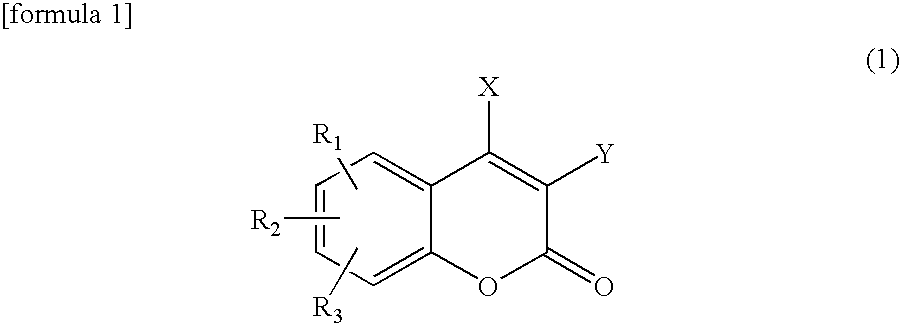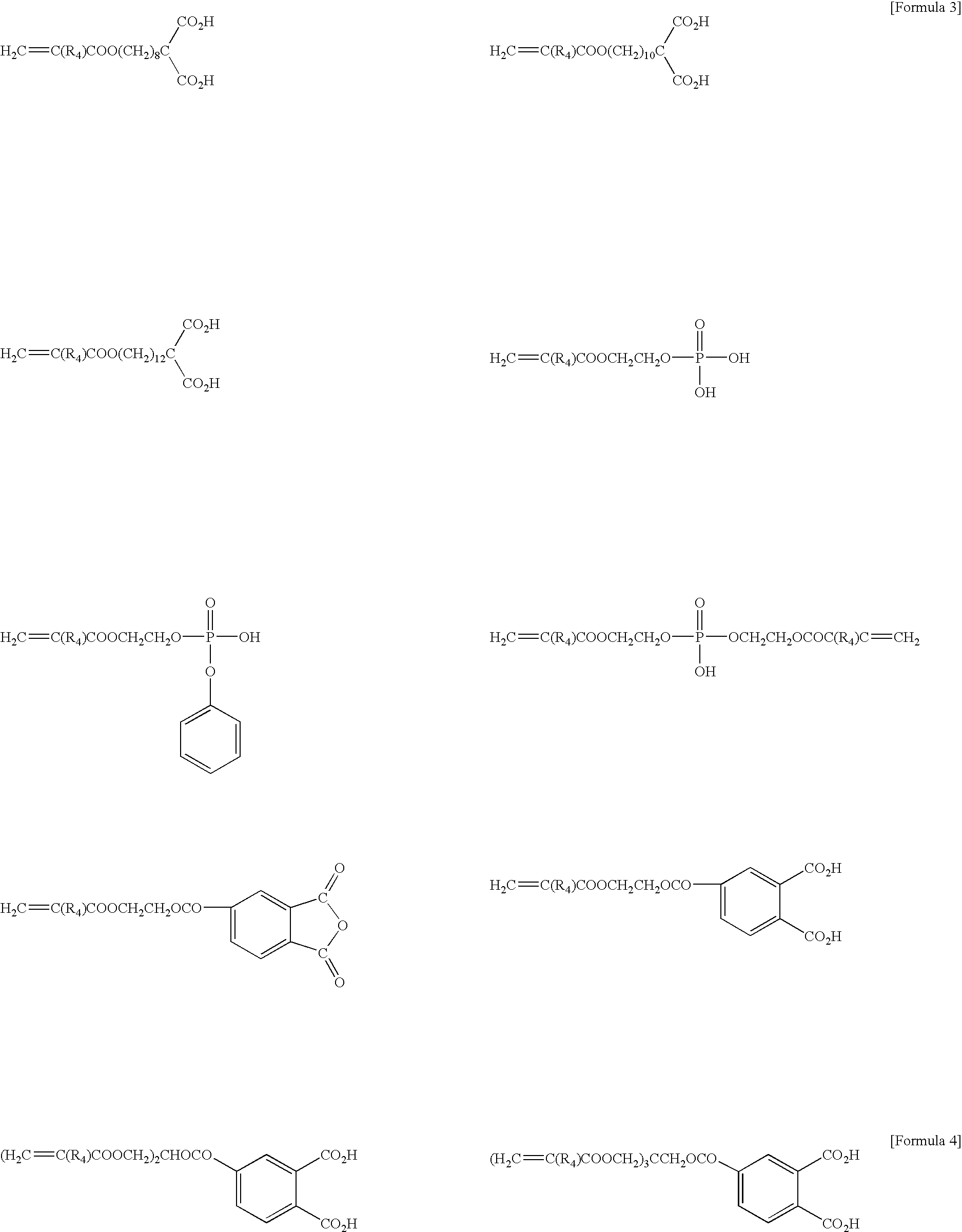Adhesive for teeth-straightening members
a technology for aligning members and adhesives, which is applied in the field of aligning adhesives for orthodontic attachments, can solve the problems of difficult to efficiently remove remaining adhesives, difficult to distinguish adhesives remaining on teeth surfaces, and impair the aesthetics of teeth, etc., and achieves the effects of easy detection, easy removal, and easy removal
- Summary
- Abstract
- Description
- Claims
- Application Information
AI Technical Summary
Benefits of technology
Problems solved by technology
Method used
Image
Examples
production example 1
[0151]Radical-polymerizable monomers (Bis-GMA / 3G=60 / 40) were measured. Thereinto were added CM 1 and AIBN in the proportions shown in Table 1, followed by stirring, to obtain a solution. The solution was heated at 95° C. for 1 hour under an applied nitrogen pressure to give rise to polymerization and curing. The obtained cured material was crushed using a vibration ball mill, to obtain an organic filler YF 1 having an average particle diameter of 30 μm. The formulation of the organic filler YF 1, used in Production Example 1 is shown in Table 1.
YF 2 and YF 4: Organic composite fillers having formulations shown in Table 1 were produced according to the following Production Examples 2 and 4.
production examples 2 and 4
[0152]Radical-polymerizable monomers (Bis-GMA / 3G=60 / 40) were measured. Thereinto were added CM 1 or FS and AIBN in the proportions shown in Table 1, followed by stirring, to obtain a solution. To 100 parts by mass of this matrix was added 300 parts by mass of a surface-treated silica-zirconia filler, followed by mixing; the mixture was made into a paste in a mortar. The paste was heated at 95° C. for 1 hour under an applied nitrogen pressure to give rise to polymerization and curing. The obtained cured material was ground using a vibration ball mill, to obtain an organic composite filler YF 2 or YF 4, each having an average particle diameter of 30 μm. The formulations of the organic composite fillers, used in Production Examples 2 and 4 are shown in Table 1.
YF 3: An organic composite filler having a formulation shown in Table 1 was produced according to the following Production Example 3.
production example 3
[0153]100 g of a silica-zirconia filler was placed in 200 g of water. Using a circulation type grinder (a SC mill), a liquid dispersion of inorganic powder was obtained.
[0154]Then, to 80 g of water were added 4 g (0.016 mol) of γ-methacryloyloxypropyltrimethoxysilane and 0.003 g of acetic acid, followed by stirring for 1 hour and 30 minutes, to obtain a uniform solution having a pH of 4. This solution was added to the above-prepared liquid dispersion, followed by uniform mixing. Then, the uniform dispersion was fed, with gentle mixing, onto the disc (which was rotating at a high speed) of a spray drier (Spray Drier TSR-2W, a product of Sakamoto Giken K.K.) to spray-dry the dispersion by the centrifugal force of the disc. In this case, the rpm of the disc was 10,000 and the temperature of ambient air was 200° C. Then, the spray-dried inorganic powder was vacuum-dried at 60° C. for 18 hours to obtain 71 g of inorganic aggregated particles. The inorganic aggregated particles had an ave...
PUM
 Login to View More
Login to View More Abstract
Description
Claims
Application Information
 Login to View More
Login to View More - R&D
- Intellectual Property
- Life Sciences
- Materials
- Tech Scout
- Unparalleled Data Quality
- Higher Quality Content
- 60% Fewer Hallucinations
Browse by: Latest US Patents, China's latest patents, Technical Efficacy Thesaurus, Application Domain, Technology Topic, Popular Technical Reports.
© 2025 PatSnap. All rights reserved.Legal|Privacy policy|Modern Slavery Act Transparency Statement|Sitemap|About US| Contact US: help@patsnap.com



